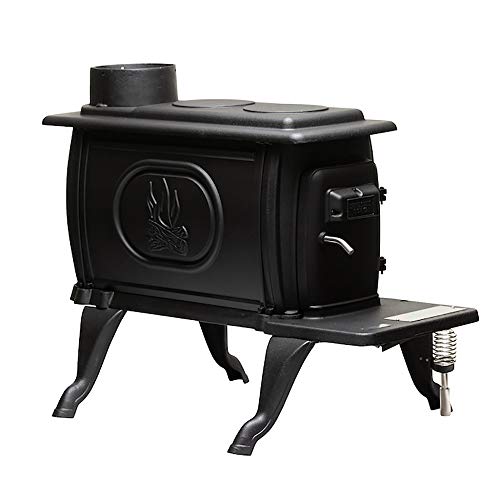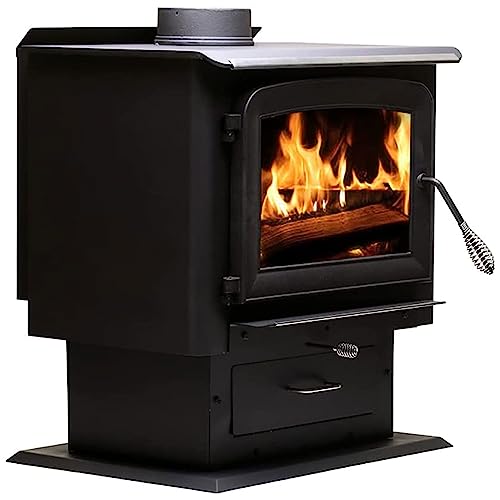EPA Certified Wood Stove For Sale
Embers Living has a large range of wood stoves that are EPA certified. These heating stoves emit radiant heat to warm your home, are powered by the grid, and are cost-effective.
Multi fuel stoves are able to use turf or peat Briquettes, anthracite, coal, and many more. If you reside in a region where smoke is regulated, you will need to make use of a DEFRA-approved multi-fuel stove.
Cost
Wood stoves are an eco efficient, low-cost method to heat your home. Modern wood stoves are EPA certified and do not put out as much pollution as other stoves. Wood stoves are more efficient than fireplaces which only heat the room in which they are located. Many brands offer a wide selection of heating stoves at competitive prices. Some are more energy efficient than others.
While a wood-burning stove can be more expensive than electric or gas models but the energy savings are well worth it. Wood stoves can save you up to 80% in heating costs. They're an excellent alternative to other heating systems. Some models also come with an air blower, which can increase the efficiency of the stove by about 30%.
Depending on the type of stove you choose, you will need to buy a
Ashley Hearth AW1820E Black Wood Stove Insert pad, which is a fire/heat resistant pad that sits on top of the floor and extends out a few feet in all directions from the wood stove. This costs between $200 and $600, depending on the size of your stove. You will also need to install an outlet, which can cost up to $1,000. In addition, you will need smoke and carbon monoxide detectors, which will add to the overall cost of the installation.
The majority of
modern wood burning stoves are made from plate steel, which is made up of low to mid-grade carbon steel plates that are welded together. Some are made of cast iron, which is a traditional construction material used to construct some of the first wood stoves.
A reputable company such as the English Stove Works manufactures these units, which have been operating since 1976. They manufacture a wide range of sizes and models to meet a variety of needs. Some of their smaller stoves can be used to warm a pole building or garage, while other units are designed to heat homes and larger commercial structures. The most efficient models can produce up to 100,000 BTUs which is enough to heat large homes.
Energy Efficiency
Wood stoves are the ideal option to heat your home with a renewable and earth-friendly fuel. They are also extremely efficient in terms of energy consumption, using less fuel than an open fire. But, it is crucial to select a stove that meets the correct heating requirement for your home. Selecting the wrong size can result in over or under firing which can cause damage to the stove and flue but also causes fuel to be wasted. To determine the proper size for your home, Declan Kingsley-Walsh, the managing director of Morso suggests calculating the size of the room by measuring its dimensions and dividing the area by 14.
Stove efficiency depends on heat transfer and combustion. Combustion efficiency is a measure of how much fuel is used to generate heat. Heating transfer efficiency is a measure of the amount of heat actually produced throughout the home. There are many ways to increase efficiency, including installing a blower and installing the chimney liner.
The most recent stoves are designed to burn cleanly, releasing fewer pollutants and producing more heat for your home. They employ a catalytic combustor to keep the fire burning longer and at lower temperatures, enhancing efficiency and reducing particulate emissions. These appliances are endorsed by the EPA and usually bear an EPA sticker. The Drolet Wood stove is a good example. It has a a high combustion efficiency rating of 71 percent and can reach 49,500 BTU per hour.

A new study has revealed wood-burning stoves as the main source of small particle pollution. Wood burning stoves produce between 38% to 17% of the total. Road transport accounts for only 13 percent. You can lower your carbon footprint if you purchase a Defra exempt stove and burn the correct kind of wood. These logs produce more heat.
A wood stove that has a high efficiency can help reduce your electricity bill. The stoves come with a combustion chamber, air injection tubes, and an combustion chamber that provides oxygen to the fire to ensure an efficient burning. They also have baffles that hold the combustible gases as well as particulates in place until they leave the stove, cutting down on air pollution. You can also buy an adjustable thermostat that can control the temperature of your home, and this will save you even more energy.
Environmental Impact
A wood-burning stove is an excellent method to keep your home warm. Some of them can produce plenty of smoke which can cause air pollution. To avoid this, be sure you use only dry and seasoned wood and to source your wood from a sustainable source. Also, consider a stove with a high heat output rating and ensures that you can comfortably heat your entire home.
The most significant pollutant released by wood stoves is ultra-fine particulate matter, that can get into the lung and cause serious health issues. The most vulnerable include older adults, children, and those with lung diseases such as asthma or COPD. The effects of exposure can be short-term, such as coughing or a feeling of being unwell however, prolonged exposure could cause serious lung damage, and possibly premature death.
Wood-burning stoves are a significant source of wintertime air pollution. Studies have shown that one residential wood stove releases more than six times the amount of PM10 and PM2.5 pollution as a modern truck. In communities where wood-burning stoves are common, programs to replace old stoves have led to significant reductions in ambient air pollution.
If you're looking for a way to reduce the environmental impact, consider buying an Ecodesign wood stove. These stoves are made to comply with minimum energy efficiency standards and are an excellent option for homes located in areas that control smoke. They are compatible with a range of fuels, such as eco briquettes and wood, peat and other biomass.
In addition to reducing air pollution, a wood-burning stove can aid in reducing your heating bills. Ecodesign wood stoves can help you save up to PS250 on electricity costs annually compared to gas stoves. This can help offset the cost of the stove, and still allow you to have cash to spend on home improvements.

If you're looking for a wood-burning stove, be sure to purchase one that has been certified by the EPA. This will not only reduce the amount of smoke released however it will extend the burn time and help you save on fuel costs. Select a stove that has an airwash feature to eliminate soot and smoke, keeping the glass clean.
Safety
While wood stoves are less expensive and more environmentally friendly source of heat, you must be aware that they produce harmful particles. These particles can reach the most tiniest parts of our lungs and cause respiratory issues, heart diseases and even premature death. They also contain harmful organic compounds that can cause cancer. Most municipalities require that homeowners use a fireplace insert that is certified or a wood stove. Look for a DEQ or EPA certification label on the back of the stove to confirm that it meets particulate emission standards.
Modern wood-burning stoves burn more efficiently than older models. You will need to purchase lots of firewood to keep your home warm. The average household uses around one cord of wood each winter. This is a large amount of wood to stack and transport, as well as store in the garage or basement. It's important to buy a good quality wood burning stove for sale that will provide many years of warmth and comfort.
The most efficient wood stoves are made from cast iron or steel. Some are EPA certified and can reduce pollution to as much as 75 percent. These models also have the largest diameter of logs and a firebrick lined inside. These features will help you cut down on your time and effort cutting, chopping and drying your wood. These are able to be used alongside other fuels, like pellets and coal.
When you purchase wood stoves, it's important to read all safety guidelines and instructions from the manufacturer. Never place a wood burning stove on a combustible surface or in a mobile house. Also, make sure that it's approved for your climate. You should also be sure to have your wood stove checked frequently by a certified technician.
The minimum distance between a wood stove and combustible substances is 36 inches. This is due to the fact that high temperatures can cause melting or damage to the walls and drywall. Wall protectors and shields that are not combustible are available and can be used to decrease the required clearance. Consult your local DEC office or EPA to find out if there are any regulations in your state pertaining to wood stoves. Some states may limit installations or ban them completely. Others might require that all wood-burning stoves comply with certain emission standards or be retrofitted with a catalytic converter in order to reduce their emissions.



